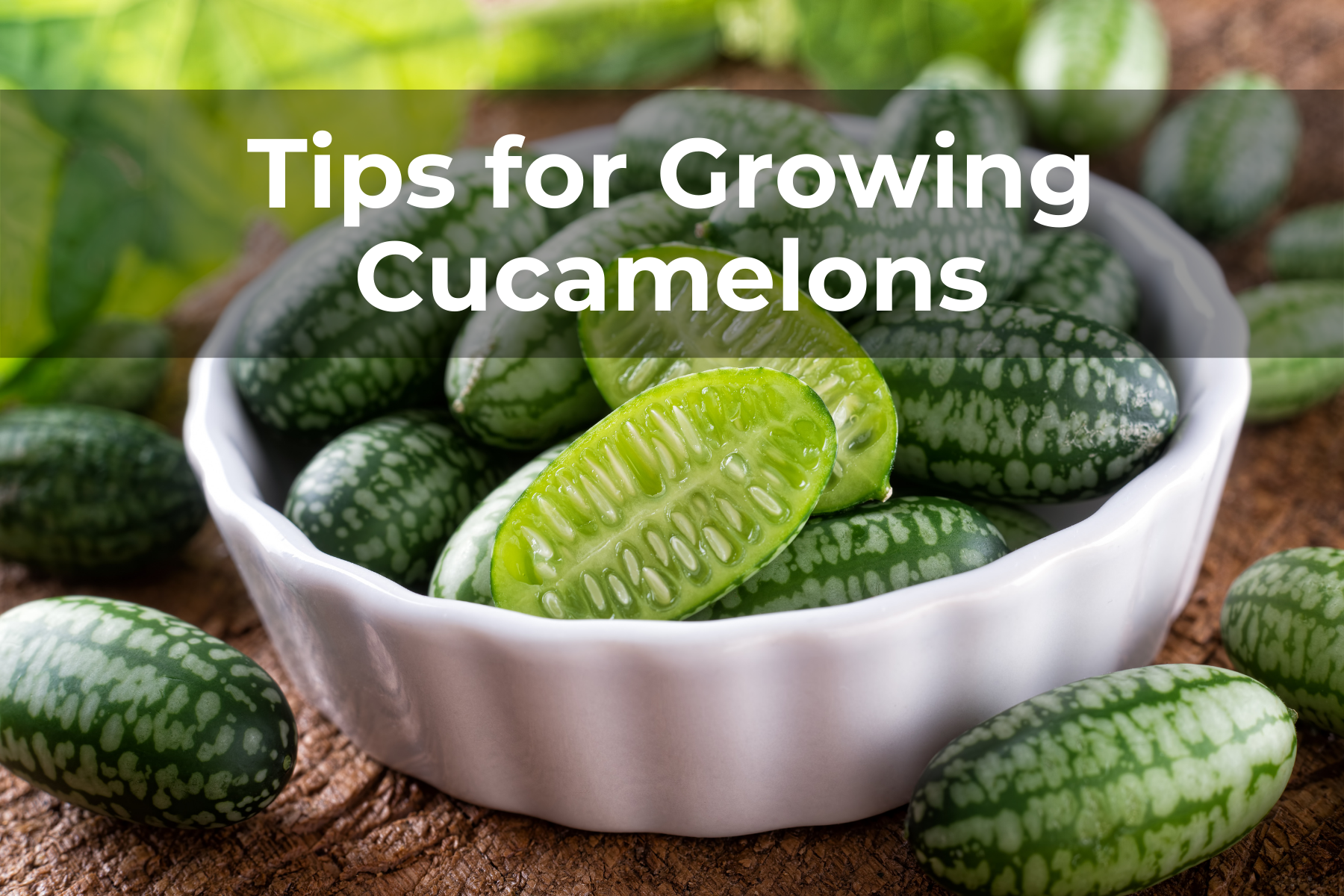Last Updated on April 10, 2024 by Real Men Sow
Cucamelons are a unique way to spice up your summer salads. They are South American natives that look and taste like mini melons but have a refreshing combination of lime and cucumber. This vine is extremely easy to grow. It can tolerate drought and pests, but most importantly it produces large quantities of grape-sized fruits throughout the summer.
What are Cucamelons?
Cucamelons, also known in Mexico as “Sandiitas de Raton” or “Little Mouse Watermelons”, are part of the same family as squashes and courgettes, pumpkins, cucumbers, and squashes. Cucamelons are small, charming fruit that has a lot of personalities. They can be found in the wild in Mexico and Venezuela. These fruits have been used for centuries by native peoples.
Cucamelons are self-fertilizing plants that produce small yellow flowers. The female flowers develop a little earlier than the males. Its fruit grows between 2.5cm and 4cm and forms around the base female flowers.
How to grow Cucamelons?
Plant your Cucamelon seeds between April and May. You should either use a propagator to plant your Cucamelon seeds or place them in a greenhouse. Seeds will germinate in about 10 days if they are kept at a constant temperature of 22-24oC (71-775oF). Place the seed with the blunt end facing down at 1cm in depth. Transfer them to 9cm (3 1/2”) pots for further growth once the seedlings have grown sufficiently large to handle.
It is safe to plant your Cucamelons outside after the dangers of frost have passed. You can plant your Cucamelons in a sunny spot with shelter, 30-40 cm (12-16”) apart provided with support. You can also grow your Cucamelon plants in a greenhouse, in large pots, in grow bags, or along the border. You should water your plants and give them liquid tomato fertilizer regularly.
Pinch the tip when the main shoot reaches 2.5m (8ft) in height. When the side shoots reach 40cm (16”), remove the tips.
By July, the plants will begin to produce fruit and they will continue to bear fruit until September. When the Cucamelons reach the size of small grapes or olives, they are ready for picking. They can become slightly bitter if left on the plants for too long.
Cucamelons can be grown year after year as a perennial. After the fruiting period has ended in late autumn, remove the main root, which looks like a radish root and you can place it in barely moist compost in your garage or shed for the winter. To get early fruiting, plant again in April.
How to enjoy them?
Cucamelons can be used in the same way as traditional cucumbers: chopped into salsas, pickled cornichons, or sliced into salsas. Mix whole Cucamelons, fresh, blanched, or pickled, into a bowl with olives, and serve with beverages. To add a twist to cocktail hour, mix them with gin and tonic or in a glass of Pimm’s.
Cucamelon seeds are easy to grow, but you can also purchase Cucamelon plants to save space and get started on the process of sowing. If you are interested in trying out another unusual and unique veg, Melon Mangomel is a great option. It’s a small, sweet mango-like melon.

